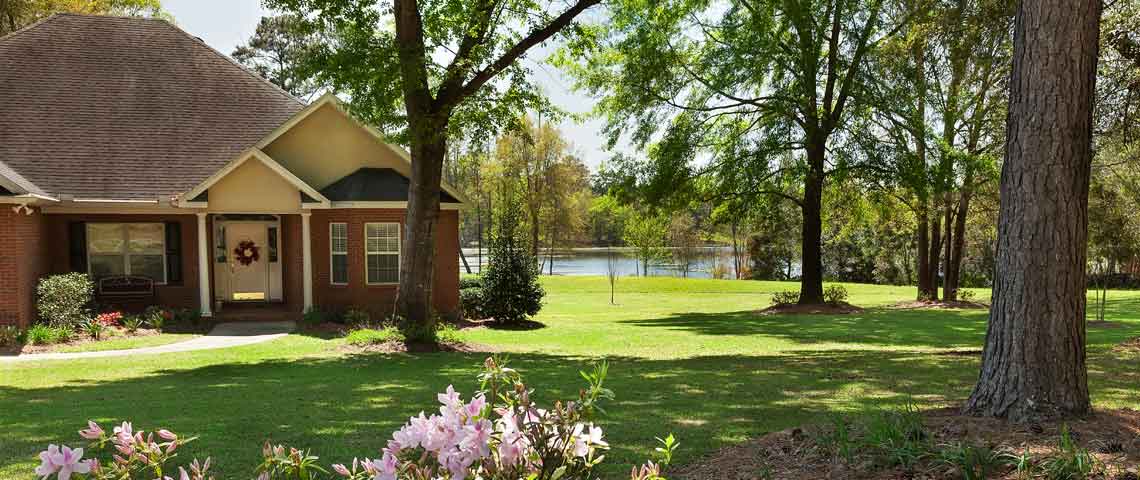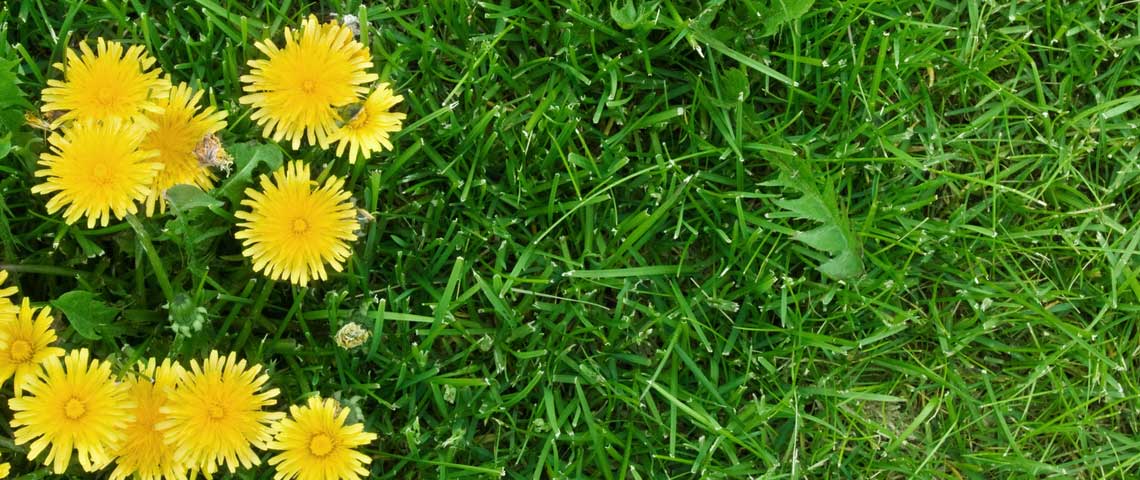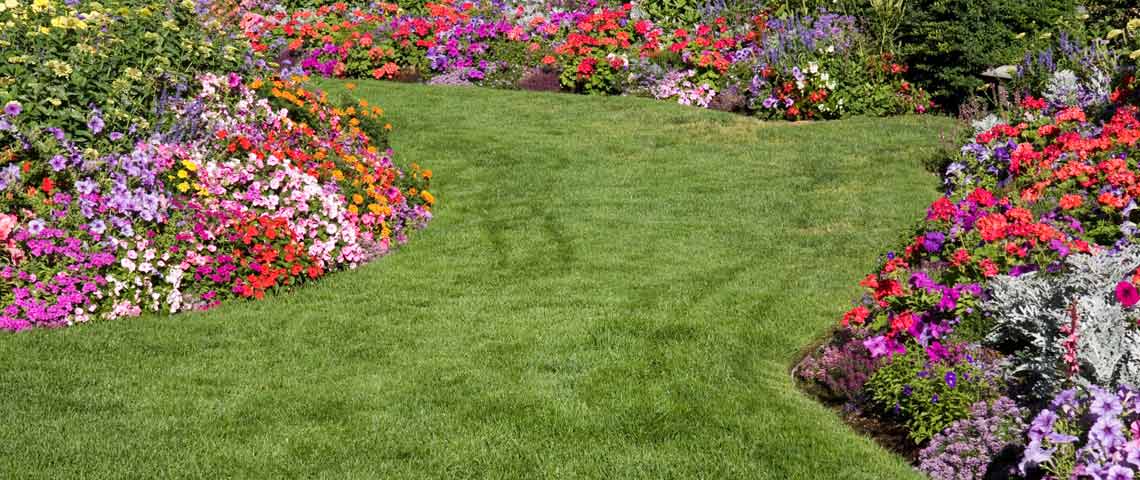The Best Cool Season Grass for Your Lawn

Despite their shared preference for lower temperatures, common cool-season lawn grasses have significant differences when it comes to growth habit, maintenance needs and other qualities that affect your lawn's performance. By understanding the traits of these grasses, you can choose the best seed or seed mix to achieve the cool-season lawn of your dreams:
- Growing Regions for Cool-Season Lawn Grasses
- Maintenance Needs of Cool-Season Lawn Grasses
- Heat Tolerance of Cool-Season Lawn Grasses
- Cold Tolerance of Cool-Season Lawn Grasses
- Drought Tolerance of Cool-Season Lawn Grasses
- Shade Tolerance of Cool-Season Lawn Grasses
- Traffic Tolerance of Cool-Season Lawn Grasses

Growing Regions for Cool-Season Lawn Grasses
When it comes to lawn grasses, the U.S. grass growing regions are largely defined by cool and warm climates, as well as levels of humidity and aridity. Cool-season grasses, in general, perform best across the northern states. Some types also do well farther south, in the challenging zone where climates and grass types transition from cool to warm.
Choosing the best cool-season grass for your lawn goes beyond climate basics. Regional conditions such as soil pH are particularly important because they can affect a grass's ability to use essential nutrients from lawn fertilizers and from soil. Most common lawn grasses prefer neutral to slightly acidic soil in the range of 5.8 to 7.0 pH. Depending on where you live, your soil pH may naturally fall outside that range and need soil amendments, such as lime or sulfur. A simple soil test can help you determine your lawn's starting point.
By choosing grasses that thrive in your region, you can reduce the need for extra labor, lawn care and products. For example, shade-tolerant fine fescues prefer slightly lower soil pH than other cool-season grasses. This helps it hold its own against unwelcome lawn moss, which also prefers shady, acidic soil. Kentucky bluegrass doesn't tolerate high-pH soil well, so perennial ryegrass or tall fescue are better choices for areas with more alkaline soil.
Maintenance Needs of Cool-Season Lawn Grasses
Mowing and fertilizing your lawn are essential steps for keeping it lush and green, but grass types vary in how much regular maintenance they need. Selecting grasses that fit well with your goals for maintenance time goes a long way toward keeping you and your lawn happy.
Kentucky bluegrass, once established, grows aggressively to form a rich, classic, blue-green lawn. But keeping it at its best requires mowing at least once per week—possibly more during the peak growing seasons—and regular fertilization is a must. Its vigorous spreading growth habit also leads to thatch buildup that requires regular dethatching and possibly aeration. Clump-forming perennial ryegrass and tall fescue rarely develop thatch problems.
Perennial ryegrass germinates and grows very quickly. This characteristic makes it a popular choice for erosion control, but it can translate to more frequent maintenance. Improved varieties such as Pennington Smart Seed Perennial Ryegrass stay shorter and require less watering and less frequent mowing than common ryegrass varieties.
Low-maintenance tall fescues typically need less fertilizer and less watering than Kentucky bluegrass or perennial ryegrass. Fine fescues vary in maintenance needs based on their growth type—some have spreading growth while others grow in upright clumps—but they typically require much less maintenance than other cool-season lawn grasses.
Regardless of your grass type, always follow good mowing practices. Mow often enough to maintain your grass's recommended mowing height without removing more than one-third of the blade in any single mowing.

Cool-season grasses stay green in winter.
Heat Tolerance of Cool-Season Lawn Grasses
Most cool-season U.S. lawn grasses originated in European countries, so they're naturally adapted to cooler climates with moderate summers and cold winters. They typically stay green during the winter months, but they may go dormant and turn brown when faced with the extreme summer heat.
Tall fescues are the most heat-tolerant of the common cool-season lawn grasses. This makes them a favorite choice for transition lawns, where other cool-season grasses succumb to hot summer conditions. While Kentucky bluegrass and perennial ryegrass are typically less heat-tolerant, improved Pennington Smart Seed varieties offer better heat tolerance than ordinary grass seed.
If cool-season grasses do go dormant in summer, they should spring back with irrigation and the return of normal weather conditions. Mowing your lawn slightly higher than normal during summer heat enhances shade grassroots and improves resilience to heat.

Lawns in areas like New England usually need lime due to acidic soil.
Cold Tolerance of Cool-Season Lawn Grasses
All cool-season grasses grow most vigorously during cooler temperatures, but they still vary in their tolerance for the winter cold. Kentucky bluegrass offers the greatest cold hardiness of all the cool-season grasses common to northern lawns, standing up to the extreme winter cold. Fine fescues also have excellent cold tolerance.
Versatile tall fescue's cold tolerance underscores its transition zone value, especially where temperatures drop low enough to damage or kill warm-season grasses. Pennington Smart Seed Tall Fescue offers improved cold tolerance to complement improved heat tolerance over that of ordinary tall fescue grasses.
Perennial ryegrass is less cold-tolerant than tall fescue, but it's still a good choice for permanent northern lawns and temporary, winter lawns farther south. When warm-season lawns turn brown for winter, many southern homeowners overseed Bermudagrass lawns with perennial ryegrass. The cool-season grass won't survive southern summers, but it will deliver color until warm-season grasses green up again.
Drought Tolerance of Cool-Season Lawn Grasses
Deep, extensive root systems help lawn grasses tolerate periods of drought. Grasses with shallow roots are more vulnerable grasses to low rainfall and need more irrigation to stay green during drought.
Tall fescue has the greatest drought tolerance of the common cool-season lawn grasses, in part because its naturally extensive root system typically extends 2 to 3 feet deep or more. Perennial ryegrass roots grow less deep than tall fescue, and Kentucky bluegrass roots are naturally less deep than both of these.
However, Pennington Smart Seed Kentucky Bluegrass and all Smart Seed varieties, have improved drought tolerance over ordinary grass varieties. Developed through decades of industry-leading research, water-conserving Smart Seed grasses require up to 30 percent less water than ordinary grasses once they get established in your lawn, and they stay green up to three weeks without watering.
You can enhance the drought tolerance of your lawn through good lawn watering practices. Most grasses typically need 1 inch of water per week from rain or irrigation. Frequent, shallow watering encourages shallow roots. Deep, less frequent watering encourages roots to grow deeper, where they're protected from extremes of drought and heat.

Sports fields in northern areas need grasses that withstand cold and heavy use.
Shade Tolerance of Cool-Season Lawn Grasses
As a general rule, all lawn grasses prefer abundant sunshine. But some types can tolerate degrees of shade and still deliver a lush, green lawn. Fine fescue is the standard for shade-tolerant lawn grasses; it can flourish even in areas that receive as little as two to four hours of direct daily sun. This quality makes fine fescues an essential component in shade seed mixes such as Pennington Smart Seed Dense Shade and repair products such as Pennington One Step Complete Dense Shade.
Next in line for shade tolerance is tall fescue, which can thrive in areas that receive as few as four to six hours of sun each day. Perennial ryegrass tolerates lightly shaded areas, but it prefers at least six hours of sun. Among the cool-season lawn grasses, Kentucky bluegrass has the lowest shade tolerance of the group. It tolerates light shade, but you'll see the best results in full-sun areas that get more than six hours of direct daily sun.
Traffic Tolerance of Cool-Season Lawn Grasses
Growth habit and growth rates have a lot to do with how well lawns stand up to steady traffic of kids, pets and backyard entertaining. Grasses differ in their ability to withstand heavy use and in their capacity for self-repair. All grasses are vulnerable to injury when dormant or stressed, so always limit lawn traffic during these times.
Traffic-tolerant Kentucky bluegrass spreads via aggressive underground stems known as rhizomes. This protected underground growth and high growth rate creates a thick, dense turf that stands up to use and repairs itself quickly when damage occurs. That's one reason it's a standard component in seed mixes for active lawns and athletic fields.
Perennial ryegrass and tall fescue naturally grow in clumps and spread through vertical shoots rather than hidden rhizomes. This makes them less traffic-tolerant and slower to recuperate from injury. However, perennial ryegrass's fast growth rate compensates; it's also a favorite component in active seed mixes. With fine fescues, growth habit makes the difference. Seed tags on your seed product will list the types included in your mix. Varieties that spread through rhizomes, such as creeping red fescue, tolerate traffic much better than varieties that grow in upright clumps, such as Chewings.
By understanding the characteristics of cool-season grasses, you can choose seed and seed mixes that suit your lawn and the goals you've set. Pennington is committed to providing homeowners with the finest grass seed, premium lawn care products and educational resources, so you can have a lawn you're proud to call your own.
Pennington, One Step Complete, Smart Seed are trademarks of Pennington Seed, Inc.



